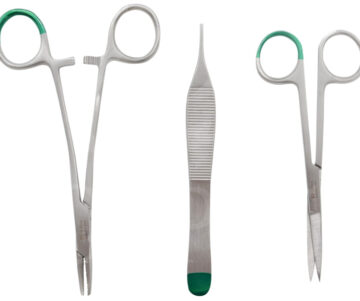
Understanding the Impact of Medical Diagnostic Equipment
Riley Wagner | January 1, 2024 | 0 | Medical EquipmentIn the vast and complex world of health care, medical diagnostic equipment plays a critical role. These tools, from simple stethoscopes to state-of-the-art imaging machines, are the backbone of modern medicine. They allow healthcare professionals to detect, diagnose, and monitor diseases, leading to improved patient outcomes.
The Essence of Medical Diagnostic Tools
These tools are a broad term covering a wide range of devices used in clinical settings. These include imaging machines such as X-rays and MRI scanners, blood analysis equipment, and diagnostic sets that contain a variety of tools for physical examinations.
The importance of these tools cannot be overstated. They provide doctors with a window into the body, revealing what’s happening inside without invasive procedures.
The Transformative Power of Diagnostic Tools
Imagine a world without the benefits of medical diagnostic tools. Diseases would go undetected until symptoms become severe enough to be noticed. Treatments would be more of a guessing game, based on external signs rather than definitive evidence. The impact of these tools extends beyond individual patients to public health at large. They enable disease surveillance, helping to track and control the spread of infectious diseases.
One such tool that has made a significant difference in healthcare is the diagnostic set. This typically includes essential tools like an otoscope for ear examinations, an ophthalmoscope for eye examinations, and other instruments necessary for a comprehensive physical examination. Such sets are a staple in every doctor’s office, allowing for efficient and effective patient evaluation.
The Role in Disease Management
These tools also play a vital role in disease management. Once a condition is diagnosed, regular monitoring is often necessary. These tools enable healthcare providers to track the progression of a disease, assess the effectiveness of treatments, and make necessary adjustments. In chronic conditions, such as diabetes or heart disease, regular monitoring can significantly improve the patient’s quality of life.
Challenges and Future Perspectives
Despite the incredible advances in these tools, challenges remain. Access to these tools is still limited in many parts of the world, particularly in low-income countries. There is also a continuous need for innovation to improve accuracy, speed, and affordability.
Looking to the future, we can expect that these tools will continue to evolve. With advancements in technology, we are likely to see more portable, user-friendly devices.
Conclusion
In conclusion, the impact of medical diagnostic equipment on healthcare is profound. These tools have revolutionized medicine, enabling early detection, accurate diagnosis, and effective disease management. Despite current challenges, the future holds great promise for further advancements in this vital field.


